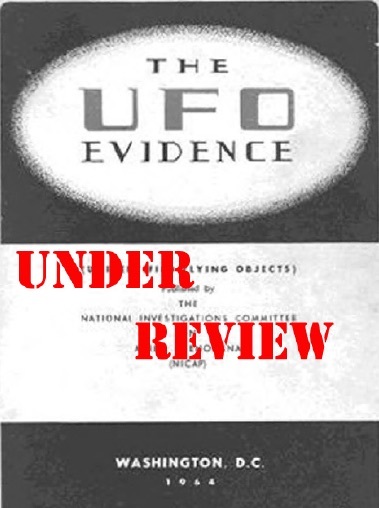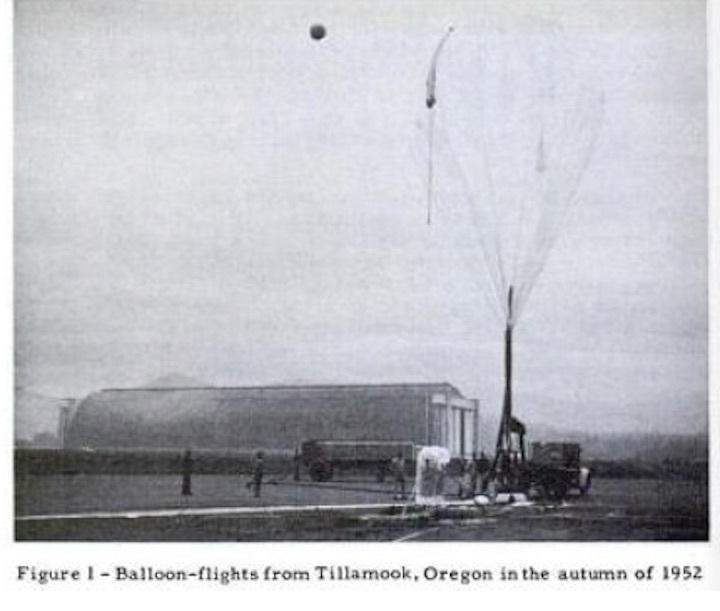
December 10, 1952 Hanford WA
The Chronology’s description of this sighting reads:
December 10, 1952--Nr. Hanford, Washington, Radar-visual sighting of round, white UFO with “windows.” [VIII]1
Section VIII gives the following description:
F-94 obtained radar lock-on; UFO seen as round, white, with “windows.”2
The reference is Ruppelt’s, The Report on Unidentified Flying Objects.
Ruppelt’s account
Edward Ruppelt’s book only briefly mentions the incident:
On the night of December 10, 1952, near another atomic installation, the Hanford plant in Washington, the pilot and radar observer of a patrolling F-94 spotted a light while flying at 26,000 feet. The crew called their ground control station and were told that no planes were known to be in the area. They closed on the object and saw a large, round, white “thing” with a dim reddish light coming from two “windows.” They lost visual contact but got a radar lock-on. They reported that when they attempted to close on it again it would reverse direction and dive away. Several times the plane altered course itself because collision seemed imminent. 3
Since Ruppelt used the Blue Book files for his source, the case was probably located there.
Blue Book file
Project Blue Book but the actual location of the incident was Odessa, Washington.4 It occurred at 0315Z on 11 December (1915 PST on the 10th). I guess distance is a relative thing because Odessa is over fifty miles away from the Hanford nuclear research facility!
The case file really does not have a lot of information. It has a teletype and a summary page. There are also excerpts from Ruppelt’s and Menzel’s books. No further investigation of the incident is recorded. The summary of the report suggested that what was seen was a research balloon.
Analysis
It seems that NICAP only read part of the story told by Ruppelt. Just one page after describing the event, Ruppelt made the following comment:
In the case involving the ground observer and the F-47 near the atomic installation, we plotted the winds and calculated that a lighted balloon was right at the spot where the pilot encountered the light.
In the other instance, the “white object with two windows,” we found that a skyhook balloon had been plotted at the exact sight of the “battle”. 5
The December 10 event was the second incident described.
A check of stratocat does not provide us with any known research balloons in the area and the Blue Book file makes no mention of a plotted balloon. However, Stratocat is an incomplete document and does not include a lot of flights. This was especially true with service/test flights, where no research was being performed.
One of the launch sites for Skyhook balloons in the early 1950s was Tillamook, Oregon. It was at a bearing of 243 degrees and 280 miles away from Odessa. Wind data for this time period is very limited. What balloon data that is available is far from Odessa.

Winds below these levels were from the west and southwest. For the most part, the winds are consistent between these stations. This implies that the winds near Odessa were probably the same. It seems plausible that a balloon launched from Tillamook could have reached the area.
According to Stratocat, Tillamook did not begin Skyhook operations until January 1953.7 However, news media reports indicate that Tillamook was launching balloons in 1952. In mid-August 1952, the Navy had announced they were going to be launching balloons from Tillamook.8 Two weeks later, the news media announced a balloon from Tillamook had been recovered in Moscow, Idaho.9 Another balloon had been recovered in the spring of 1952.10 In October of 1955, the Office of Naval Research published an article describing balloon launches from Tillamook in the fall of 1952.11 This demonstrates that Tillamook was in operation prior to December of 1952 and they were gearing up to perform more agressive flights in 1953.

Conclusion
I can see no reason to reject the possibility this was a balloon from Tillamook, Oregon. The winds support a potential trajectory that might have brought a balloon towards Odessa and Tillamook was actively launching balloons in 1952. Because of the lack of records, we don’t have a known balloon launch. Ruppelt felt there was one recorded but his information is an anecdote and the Blue Book file contains no mention of positively identifying this as a balloon. Therefore, we can only classify this as a “possible research balloon”. Still, there is enough evidence that indicates the case should be removed from the “UFO evidence” category.
Quelle: SUNlite 6/2022
